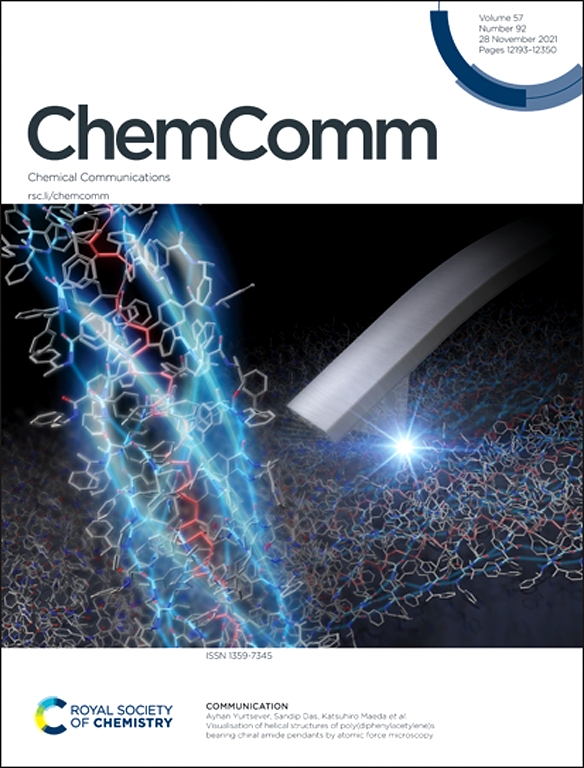无金属材料作为乙炔加氢氯化催化剂的现状与展望:活性位点、掺杂剂和机理
IF 4.2
2区 化学
Q2 CHEMISTRY, MULTIDISCIPLINARY
引用次数: 0
摘要
乙炔加氢氯化是生产vinyl氯单体(VCM)的主要催化途径之一,特别是在富煤地区,以汞或贵金属氯化物作为常规催化剂。近年来,由于严格的环境法规和强烈的可持续发展动机,乙炔加氢反应的催化剂正迅速从金属基材料向无金属材料过渡,这一趋势在碳、氮化硼、石墨氮化碳和离子液体的一系列研究中得到了明显的体现,这些催化剂在乙炔加氢反应中取得了重大进展。本文从活性位点的性质、掺杂效应、反应机理、优化方法等方面综述了无金属催化剂的研究现状和发展趋势,为今后的研究提供参考。对于碳材料,阐述了氮掺杂对催化性能的重要作用,探索了可能的活性氮种类,并在协同效应的框架下讨论了双掺杂策略,以进一步提高活性和稳定性。对于其他无金属材料,它们与碳催化剂在反应物吸附和反应机理上表现出不同的模式,特别是由于HCl和C2H2之间的平衡吸附,发现了双位点机制。对于每一种不含金属的材料,在本节的末尾进行了简短的讨论,以阐明其独特的性质,揭示其与传统金属催化剂和其他不含金属材料的区别。最后讨论了阻碍无金属催化剂进一步发展的关键问题和替代金属催化剂的可行途径。总的来说,目前的工作为乙炔氢氯化无金属催化剂的未来发展铺平了道路。本文章由计算机程序翻译,如有差异,请以英文原文为准。
Current status and perspective of metal-free materials as catalysts in acetylene hydrochlorination: active site, dopant, and mechanism
Acetylene hydrochlorination is one of the main catalytic routes for vinyl chloride monomer (VCM) production, in particular for coal-rich regions, with mercury or noble metal chlorides as conventional catalysts. In recent years, there is a fast-growing transition from metal-based catalysts to metal-free materials for acetylene hydrochlorination because of strict environmental regulation and strong motivation for sustainable development, and this trend is clearly exemplified in a series of studies on carbon, boron nitride, graphitic carbon nitride, and ionic liquids, which garnered significant interest as catalysts in acetylene hydrochlorination. In this review, the current status and development of these metal-free catalysts are summarized with a focus on the nature of active sites, doping effects, reaction mechanism, and optimization methods, in order to provide a timely account. For carbon materials, the essential role of nitrogen dopants in catalytic performance is elaborated and possible active nitrogen species are explored, and the dual dopant strategy is discussed in the frame of synergetic effects which could further boost the activity and stability. For the other metal-free materials, they exhibited a different pattern regarding reactant adsorption and reaction mechanism from the carbon catalysts, in particular a dual-site mechanism is found due to the balanced adsorption between HCl and C2H2. For each metal-free material, a short discussion is provided at the end of the section to shed light on the unique property which uncovered the difference from not only conventional metal catalysts but also the other metal-free materials. In the end, the key issues preventing the further improvements of metal-free catalysts and the practical way to replace metal catalysts are discussed. Overall, the current work paves the way for the future development of metal-free catalysts for acetylene hydrochlorination.
求助全文
通过发布文献求助,成功后即可免费获取论文全文。
去求助
来源期刊

Chemical Communications
化学-化学综合
CiteScore
8.60
自引率
4.10%
发文量
2705
审稿时长
1.4 months
期刊介绍:
ChemComm (Chemical Communications) is renowned as the fastest publisher of articles providing information on new avenues of research, drawn from all the world''s major areas of chemical research.
 求助内容:
求助内容: 应助结果提醒方式:
应助结果提醒方式:


